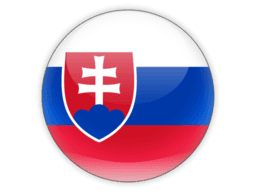
Cities of Slovakia
Discover 133 cities across 8 regions
Banská Bystrica Region(18)
Bratislava Region(24)
Košice Region(13)
Nitra Region(14)
Prešov Region(17)
Trenčín Region(15)
Slovakia is a landlocked country in Central Europe. It covers an area of 49,000 square kilometers (19,000 square miles) and has a population of approximately 5.5 million people. The country is known for its natural beauty, including the Tatra Mountains, which are popular with hikers and skiers, as well as its rich culture and history.
The capital and largest city is Bratislava, which is located on the banks of the Danube River. Other major cities include Košice, Prešov, and Žilina. The official language is Slovak, which is a Slavic language closely related to Czech.
Slovakia is a member of the European Union, NATO, and the United Nations. It has a developed economy with a strong industrial sector, particularly in the automotive and electronics industries. The country also has a rich cultural heritage, including traditional folk music and dance, and a variety of architectural styles ranging from medieval castles to modernist buildings.
Tourism is an important industry in Slovakia, with visitors drawn to the country's natural beauty, historic cities, and cultural attractions. The most popular tourist destinations include the High Tatras, Spiš Castle, the Slovak Paradise National Park, and Bratislava's Old Town.
Slovakia has a parliamentary system of government, with a president who serves as the head of state and a prime minister who serves as the head of government. The country is divided into eight regions, each with its own regional government.
Overall, Slovakia is a relatively small but culturally rich and economically developed country with a lot to offer visitors and residents alike.
Telephone Code
421
Local Emergency Phone
Ambulance: 155; Fire: 150; Police; 158
Vaccinations
See WHO recommendations
Climate
Temperate; cool summers; cold, cloudy, humid winters
Currency (Code)
Euros (EUR)
Electricity/Voltage/Plug Type(s)
230 V / 50 Hz / plug types(s): C, E
Major Languages
Slovak, Hungarian, Roma, Ruthenian
Major Religions
Roman Catholic 62%, Protestant 8.2%, Greek Catholic 3.8%
Potable Water
Yes
International Driving Permit
Suggested
Road Driving Side
Right
Tourist Destinations
Spis Castle; Slovak Paradise National Park; Pieniny Mountains; Demanovska Cave of Liberty; Vychodna Folklore Festival; Bratislava Castle; Tatra Mountains; Levoca
Major Sports
Soccer, ice hockey, cycling, hiking, soccer
Cultural Practices
Always wait to be invited before using someone’s first name. If you are invited to a Slovak’s home, take wine, flowers, or good quality chocolates for the hostess.
Tipping Guidelines
A tip of 10-20% is expected in restaurants. In other settings, tipping is expected only from tourists. In such cases, either round up a bill or leave 10% of the total.
Souvenirs
Cornhusk dolls and puppets, glass and crystal, musical instruments, woodcarvings, pottery and porcelain, hand-embroidered cloth, chocolate, cheese, ginger desserts, wine and brandy
Traditional Cuisine
Bryndzové halušky — small boiled dumplings made from grated potato, flour, and egg then covered in a special sheep’s cheese and topped with bacon bits and drippings
Geography
Area
total: 49,035 sq km
land: 48,105 sq km
water: 930 sq km
Climate
temperate; cool summers; cold, cloudy, humid winters
Natural resources
lignite, small amounts of iron ore, copper and manganese ore; salt; arable land
People and Society
Population
5,425,319 (2023 est.)
Ethnic groups
Slovak 83.8%, Hungarian 7.8%, Romani 1.2%, other 1.8% (includes Czech, Ruthenian, Ukrainian, Russian, German, Polish), unspecified 5.4% (2021 est.)
Languages
Slovak (official) 81.8%, Hungarian 8.5%, Roma 1.8%, other 2.2%, unspecified 5.7% (2021 est.)
Religions
Roman Catholic 55.8%, Evangelical Church of the Augsburg Confession 5.3%, Greek Catholic 4%, Reformed Christian 1.6%, other 3%, none 23.8%, unspecified 6.5% (2021 est.)
Population growth rate
-0.12% (2023 est.)
Government
Government type
parliamentary republic
Capital
name: Bratislava
Economy
Economic overview
high-income, EU-member European economy; major electronics and automobile exporter; new anticorruption and judiciary reforms; low unemployment; low regional innovation; strong financial sector
Real GDP (purchasing power parity)
$173.582 billion (2021 est.)
Real GDP per capita
$31,900 (2021 est.)
Agricultural products
wheat, maize, sugar beets, milk, barley, rapeseed, potatoes, sunflower seeds, soybeans, pork
Industries
automobiles; metal and metal products; electricity, gas, coke, oil, nuclear fuel; chemicals, synthetic fibers, wood and paper products; machinery; earthenware and ceramics; textiles; electrical and optical apparatus; rubber products; food and beverages; pharmaceutical
Exports
$107.43 billion (2021 est.)
Exports - partners
Germany 22%, Czechia 11%, Poland 7%, France 7%, Hungary 6%, Austria 5%, United Kingdom 5% (2019)
Exports - commodities
cars and vehicle parts, video displays, broadcasting equipment, tires, refined petroleum (2019)
Imports
$107.358 billion (2021 est.)
Imports - partners
Germany 18%, Czechia 18%, Poland 8%, Hungary 7%, Russia 5% (2019)
Imports - commodities
cars and vehicle parts, broadcasting equipment, crude petroleum, natural gas, insulated wiring (2019)
International Airports in Slovakia
Discover 4 major airports serving Slovakia
Mark Slovakia as Visited
Add Slovakia to your personal travel map and track your journey around the world. Share your adventures and see your progress grow!